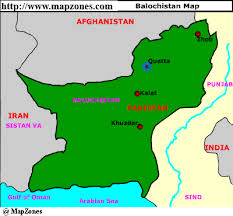


Balochistan :is a province in Pakistan, the largest in the country by geographical area.It contains most of the historical region of Balochistan and is named after the Baloch.


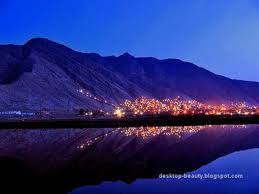
Capital The capital and largest city is Quetta.
Time zone PST (UTC+5)
Main language: Balochi is official language. The principal languages in the province are Baluchi, Brahui,Sindhi , Pashto, Urdu (national)
Established:In 1st July 1970 Balochistan was established
• Governor/Commissioner:Nawab Zulfikar Ali Magsi
• Chief Minister: Nawab Aslam Raisani 

• Legislature (seats) :Provincial Assembly has (65)
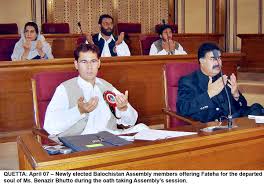
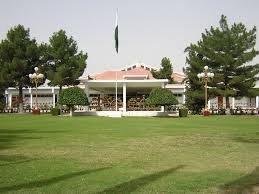
- Location: Its neighbouring regions are Iranian Balochistan to the west, Afghanistan and the Federally Administered Tribal Areas to the north and Punjab and Sindh to the east. To the south is the Arabian Sea.d Pashto. Balochistan is believed to be rich in mineral resources. It is the second major, after Sindh, supplier of natural gas to the country.
- GeographyBalochistan is located at the eastern edge of the Iranian plateau and in the border region between Southwest, Central, and South Asia. It is geographically the largest of the four provinces at 347,190 km² or (134,051 square miles) of Pakistani territory; and composes 48% of the total land area of Pakistan. The population density is very low due to the mountainous terrain and scarcity of water. The southern region is known as Makran. The central region is known as Kalat.The Sulaiman Mountains dominate the northeast corner and the Bolan Pass is a natural route into Afghanistan towards Kandahar and was used as a route during the British campaigns to Afghanistan[1]. Much of the province south of the Quetta region is sparse desert terrain with pockets of towns mostly near rivers and streams.The capital city is Quetta, located in the most densely populated district in the northeast of the province. Quetta is situated in a river valley near the border with Afghanistan, with a road to Kandahar in the northwest.At Gwadar on the coast the Pakistani government is currently undertaking a large project with Chinese help to build a large port. This is being done partially to provide the Pakistan Navy with another base, and to reduce Pakistan's reliance on Karachi and Port Qasim, which are currently the only major ports[2]

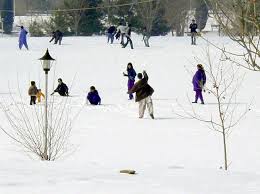
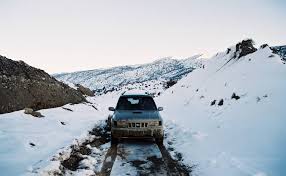 Climate Very cold winters and hot summers characterise the climate of the upper highlands. Winters of the lower highlands vary from extremely cold in the northern districts to mild conditions closer to the Makran coast. Summers are hot and dry, especially the arid zones of Chaghai and Kharan districts. The plain areas are also very hot in summer with temperatures rising as high as 120 °F (50 °C). Winters are mild on the plains with the temperature never falling below the freezing point. The desert climate is characterised by hot and very arid conditions. Occasionally strong windstorms make these areas very inhospitable.Population: Balochistan has a population of around 10 million inhabitants. Overall, the Baloch and Brohi tribes comprise around 62% of the province's population[citation needed]. However migration & settlement by other ethnic groups has greatly reduced the Baloch population of the area & some of the baloch have moved to other areas in South Punjab, Sindh & Karachi. The rest are mainly Pashtuns, Hazaras and Sindhis. Baloch are concentrated in the sparsely populated north-west, west, east and south; Brohis in the centre of the province, mainly living by cattle-herding, manual laboring & fishing on the coasts. While the Pashtuns are the majority in the north. Quetta, the capital of the province, has a Pashtun majority with Baloch, Hazaras and Punjabi minorities. Near the Kalat region and other parts of the province there are significant numbers of Brahui speakers. Along the coast various Makrani Balochis predominate. In addition, 769,000 Afghan refugees can be found in the province including Pashtuns, Tajiks, and Hazaras. Many Sindhi farmers have also moved to the more arable lands in the east. There are also a growing number of other(s) ethnic groups consisting of Kurdish, Panjabi, Mohajir and Iranians who have made Balochistan their home in recent decades.[citation needed]History of BalochistanBalochistan was the site of the earliest known farming settlements upon the Iranian plateau bordering South Asia, the earliest of which was Mehrgarh dated at 6500 BCE. Pakistani Balochistan corresponds to the ancient Achaemenid province of Gedrosia. Balochistan was sparsely populated by various tribes, possibly of Dravidian and Indo-Iranian origin, for centuries following the decline of the nearby Harappa-Mohenjo-daro civilisation to the east. Over time, Balochistan was invaded by various Eurasian groups including the Aryans, Persians, Greeks, Kushans, Arabs, Turks, Mongols, Mughals, Afghans, and the British. Aryan invasions appear to have led to the eventual demise of the Elamo-Dravidian with the exception of the Brahui who may have arrived much later as did the Balochis themselves. The Balochis began to arrive from their homeland in northern Iran and appear to be an offshoot of the Kurdish tribes that would mainly populate the western end of the Iranian plateau. The Balochi tribes eventually became a sizeable group rivalled only by another Iranian group where Brohis and Pashtuns came under influnces of Balochis.Islamic arrival in BaluchistanWhat is now Baluchistan province of Pakistan, in the 7th century was divided into two main regions, its south western parts were part of Kerman Province of the Persian Empire and north eastern region was part of the Persian province Sistan. The southern region was included in Makran. In early 644, Caliph Umar sent Suhail ibn Adi from Busra to conquer the Kerman region of Iran; he was made governor of Kerman. From Kerman he entered the western Baluchistan and conquered the region near to Persian frontiers.[4] South Western Baluchistan was conquered during the campaign in Sistan the same year. During Caliph Uthman’s reign in 652, Baluchistan was re-conquered during the campaign against the revolt in Kerman, under the command of Majasha ibn Masood, it was first time when western Baluchistan came directly under the Laws of Caliphate and gave tribute on agriculture.In those days western Baluchistan was included in the dominion of Kerman. In 654 Abdulrehman ibn Samrah was made governor of Sistan, an Islamic army was sent under him to crush the revolt in Zarang, which is now in southern Afghanistan. Conquering Zarang a column moved north ward to conquer areas up to Kabul and Ghazni in Hindu Kush Mountains, while another column moved towards North western Baluchistan and conquered area up to the ancient city of Dawar and Qandabil (Bolan),[6] by 654 the whole of what is now Baluchistan province of Pakistan was under the rule of Rashidun Caliphate except for the well defended mountain town of QaiQan (now Kalat), which was conquered during Caliph Ali’s reign. Abdulrehman ibn Samrah made Zaranj his provincial capital and remained governor of these conquered areas from 654 to 656, until Uthman was murdered. During the Caliphate of Ali, the areas of Baluchistan, Makran again broke into revolt. Due to civil war in the Islamic empire Ali was unable to deal with these areas until 660 when he sent a large force under the command of Haris ibn Marah Abdi towards Makran, Baluchistan and Sind. Haris ibn Marah Abdi arrived in Makran and conquered it by force then moved north ward to north eastern Baluchistan and re-conquered Qandabil (Bolan), then again moving south finally conquered Qaiqan (Kalat) after a fierce battle. In 663 during the reign of Umayyad Caliph Muawiyah I, Muslim lost control of North eastern Baluchistan and Kalat when Haris ibn Marah and large part of army died in the battle field against a revolt in Kalat. Muslim forces latter re-gained the control of the area during Umayyads reign. It also remained part of Abbasid Caliphate's empire.
Climate Very cold winters and hot summers characterise the climate of the upper highlands. Winters of the lower highlands vary from extremely cold in the northern districts to mild conditions closer to the Makran coast. Summers are hot and dry, especially the arid zones of Chaghai and Kharan districts. The plain areas are also very hot in summer with temperatures rising as high as 120 °F (50 °C). Winters are mild on the plains with the temperature never falling below the freezing point. The desert climate is characterised by hot and very arid conditions. Occasionally strong windstorms make these areas very inhospitable.Population: Balochistan has a population of around 10 million inhabitants. Overall, the Baloch and Brohi tribes comprise around 62% of the province's population[citation needed]. However migration & settlement by other ethnic groups has greatly reduced the Baloch population of the area & some of the baloch have moved to other areas in South Punjab, Sindh & Karachi. The rest are mainly Pashtuns, Hazaras and Sindhis. Baloch are concentrated in the sparsely populated north-west, west, east and south; Brohis in the centre of the province, mainly living by cattle-herding, manual laboring & fishing on the coasts. While the Pashtuns are the majority in the north. Quetta, the capital of the province, has a Pashtun majority with Baloch, Hazaras and Punjabi minorities. Near the Kalat region and other parts of the province there are significant numbers of Brahui speakers. Along the coast various Makrani Balochis predominate. In addition, 769,000 Afghan refugees can be found in the province including Pashtuns, Tajiks, and Hazaras. Many Sindhi farmers have also moved to the more arable lands in the east. There are also a growing number of other(s) ethnic groups consisting of Kurdish, Panjabi, Mohajir and Iranians who have made Balochistan their home in recent decades.[citation needed]History of BalochistanBalochistan was the site of the earliest known farming settlements upon the Iranian plateau bordering South Asia, the earliest of which was Mehrgarh dated at 6500 BCE. Pakistani Balochistan corresponds to the ancient Achaemenid province of Gedrosia. Balochistan was sparsely populated by various tribes, possibly of Dravidian and Indo-Iranian origin, for centuries following the decline of the nearby Harappa-Mohenjo-daro civilisation to the east. Over time, Balochistan was invaded by various Eurasian groups including the Aryans, Persians, Greeks, Kushans, Arabs, Turks, Mongols, Mughals, Afghans, and the British. Aryan invasions appear to have led to the eventual demise of the Elamo-Dravidian with the exception of the Brahui who may have arrived much later as did the Balochis themselves. The Balochis began to arrive from their homeland in northern Iran and appear to be an offshoot of the Kurdish tribes that would mainly populate the western end of the Iranian plateau. The Balochi tribes eventually became a sizeable group rivalled only by another Iranian group where Brohis and Pashtuns came under influnces of Balochis.Islamic arrival in BaluchistanWhat is now Baluchistan province of Pakistan, in the 7th century was divided into two main regions, its south western parts were part of Kerman Province of the Persian Empire and north eastern region was part of the Persian province Sistan. The southern region was included in Makran. In early 644, Caliph Umar sent Suhail ibn Adi from Busra to conquer the Kerman region of Iran; he was made governor of Kerman. From Kerman he entered the western Baluchistan and conquered the region near to Persian frontiers.[4] South Western Baluchistan was conquered during the campaign in Sistan the same year. During Caliph Uthman’s reign in 652, Baluchistan was re-conquered during the campaign against the revolt in Kerman, under the command of Majasha ibn Masood, it was first time when western Baluchistan came directly under the Laws of Caliphate and gave tribute on agriculture.In those days western Baluchistan was included in the dominion of Kerman. In 654 Abdulrehman ibn Samrah was made governor of Sistan, an Islamic army was sent under him to crush the revolt in Zarang, which is now in southern Afghanistan. Conquering Zarang a column moved north ward to conquer areas up to Kabul and Ghazni in Hindu Kush Mountains, while another column moved towards North western Baluchistan and conquered area up to the ancient city of Dawar and Qandabil (Bolan),[6] by 654 the whole of what is now Baluchistan province of Pakistan was under the rule of Rashidun Caliphate except for the well defended mountain town of QaiQan (now Kalat), which was conquered during Caliph Ali’s reign. Abdulrehman ibn Samrah made Zaranj his provincial capital and remained governor of these conquered areas from 654 to 656, until Uthman was murdered. During the Caliphate of Ali, the areas of Baluchistan, Makran again broke into revolt. Due to civil war in the Islamic empire Ali was unable to deal with these areas until 660 when he sent a large force under the command of Haris ibn Marah Abdi towards Makran, Baluchistan and Sind. Haris ibn Marah Abdi arrived in Makran and conquered it by force then moved north ward to north eastern Baluchistan and re-conquered Qandabil (Bolan), then again moving south finally conquered Qaiqan (Kalat) after a fierce battle. In 663 during the reign of Umayyad Caliph Muawiyah I, Muslim lost control of North eastern Baluchistan and Kalat when Haris ibn Marah and large part of army died in the battle field against a revolt in Kalat. Muslim forces latter re-gained the control of the area during Umayyads reign. It also remained part of Abbasid Caliphate's empire. History of Baloch people Many Balochis believe that their origins are Semitic and not Iranian contrary to linguistic and historical evidence. Balochis claim that they left their Aleppo homeland in Syria at some point during the 1st millennium CE and moved to Balochistan, on the other hand it is considered more likely they are an Iranian group who have possibly absorbed some Arab ancestry and cultural traits instead, it is also believed that Baloch are of Arab blood, it could be they left the Arab world when Iraq broke from Persia in 652 AD and there is historical evidence that suggests they lived in (Khuzestan) and (Bushehr) before moving to Kerman and Hormozgan. In 15th century Mir Chakar Khan Rind became first king of Baluchistan. Balochistan subsequently was dominated by empires based in Iran and Afghanistan as well as the Mughal empire based in India. Ahmed Shah Durrani annexed the region as part of a "greater" Afghanistan. The area would eventually revert to local Balochi control, while parts of the northern regions would continue to be dominated by Pashtun tribes.A Baloch shepherd, from a 1900 photoDuring the period of the British Raj, there were four Princely states in Balochistan: Makran, Kharan, Las Bela and Kalat. In 1876 Sir Robert Sandeman concluded a treaty with the Khan of Kalat and brought his territories - including Kharan, Makran, and Las Bela - under British suzerainty. After the Second Afghan War of 1878-80, the Treaty of Gandamak concluded in May 1879, the Afghan Emir ceded the districts of Quetta Pishin,Sibi, Harnai, and Thal Chotiali to the British. In 1883 the British leased the Bolan Pass, southeast of Quetta, from the Khan of Kalat on a permanent basis. In 1887 some areas of Balochistan were declared British territory. In 1893, Sir Mortimer Durand negotiated an agreement with Amir Abdur Rahman Khan of Afghanistan to fix the Durand Line running from Chitral to Balochistan to as the boundary between the Afghans and the British.There were two devastating earthquakes in Balochistan during British colonial rule: The 1935 Balochistan Earthquake devastated Quetta and the 1945 Balochistan Earthquake, with its epicentre in Makran region, was felt in other regions of South Asia.Since the 1970s there has been some small-scale violence in the area by ethnic Balochi tribesmen (mainly Bugti, Marri & Mengal tribes) agitating for increased provincial autonomy, and control of natural resources. Additionally, a few fighters even demanded outright secession of the provinces in Iran, Pakistan, and Afghanistan in order to create an independent homeland which would not only have included ethnically Baluchi areas, but also places which had only a very tiny Balochi population, such as Karachi, Bandar Abbas, Quetta, northern parts of Pakistani Balochistan (which is inhabited by Pashtuns), central Balochistan (inhabited by Brahuis), western Sindh province, and some areas around Kandahar, Afghanistan. The reasoning behind claiming such a huge swath of non-Balochi land is likely due to economics: Karachi (Mohajir & Sindhi majority) is a major economic center of about 16 million people (compared to the estimated 12 million Balochis in all countries), Bandar Abbas (Iranian Majority) is a thriving Iranian port, and Sindh (Sindhi majority) has huge deposits of natural gas. The area had been badly affected by fighting and instability in Afghanistan, with arms and refugees flooding the province. Small attacks have occurred against coal miners, oil prospectors, and energy infrastructure. The bulk of these attacks have been carried out against the Punjabi ethnic minority.There has been major attacks on Shias by Sunni extremist groups in Quetta & other cities, resulting in the death of more than a hundred people. Government crackdown on Sunni extremist groups resulted in the arrest & trial of members of Lashkar-e-Jhangvi & Sipah-e-Sahaba terrorist groups including Daud Badini & his cohorts.Many of these extremists were of Baloch & Brahui ethnicity & were from Quetta, Chagai & Mastung areas. 2 terrorist attacks were conducted on a Shia Mosque/Imambargah (2004, 54 dead) & a Shia Ashura possession of Imam Hussein (2004, 70 dead) . Most of those killed were of Hazara ethnicity.On 15 June 2006, an estimated 600 fighters, led by three commanders, agreed to lay down their weapons after talks with Shoaib Nausherwani, Baluchistan's minister for internal affairs, in Dera Bugti district. On August 26, Balochistan tribal leader Nawab Akbar Khan Bugti was killed in airstrikes carried out by the Pakistani military.In 1998 Pakistan conducted nuclear tests in Ras Koh and in the Kharan desert, both in the Kharan District in north-western Balochistan. After Musharraf's coup against the Nawaz Sharif Government, the separatist insurgency resurfaced, focusing mainly on attacks on innocent civilians.GovernmentThe unicameral Provincial Assembly of Balochistan comprises 65 seats of which 4% are reserved for non-Muslims and 16% for women only.Administrative division:Balochistan is divided into 27 districts.Awaran Barkhan Bolan Chagai Dera Bugti Gwadar Jafarabad Jhal Magsi Kalat Kech Kharan Kohlu Khuzdar Qilla Abdullah Qilla Saifullah Lasbela Loralai Mastung Musakhel Nasirabad Nushki Panjgur Pishin Quetta Sibi Zhob Ziarat Major cities:
History of Baloch people Many Balochis believe that their origins are Semitic and not Iranian contrary to linguistic and historical evidence. Balochis claim that they left their Aleppo homeland in Syria at some point during the 1st millennium CE and moved to Balochistan, on the other hand it is considered more likely they are an Iranian group who have possibly absorbed some Arab ancestry and cultural traits instead, it is also believed that Baloch are of Arab blood, it could be they left the Arab world when Iraq broke from Persia in 652 AD and there is historical evidence that suggests they lived in (Khuzestan) and (Bushehr) before moving to Kerman and Hormozgan. In 15th century Mir Chakar Khan Rind became first king of Baluchistan. Balochistan subsequently was dominated by empires based in Iran and Afghanistan as well as the Mughal empire based in India. Ahmed Shah Durrani annexed the region as part of a "greater" Afghanistan. The area would eventually revert to local Balochi control, while parts of the northern regions would continue to be dominated by Pashtun tribes.A Baloch shepherd, from a 1900 photoDuring the period of the British Raj, there were four Princely states in Balochistan: Makran, Kharan, Las Bela and Kalat. In 1876 Sir Robert Sandeman concluded a treaty with the Khan of Kalat and brought his territories - including Kharan, Makran, and Las Bela - under British suzerainty. After the Second Afghan War of 1878-80, the Treaty of Gandamak concluded in May 1879, the Afghan Emir ceded the districts of Quetta Pishin,Sibi, Harnai, and Thal Chotiali to the British. In 1883 the British leased the Bolan Pass, southeast of Quetta, from the Khan of Kalat on a permanent basis. In 1887 some areas of Balochistan were declared British territory. In 1893, Sir Mortimer Durand negotiated an agreement with Amir Abdur Rahman Khan of Afghanistan to fix the Durand Line running from Chitral to Balochistan to as the boundary between the Afghans and the British.There were two devastating earthquakes in Balochistan during British colonial rule: The 1935 Balochistan Earthquake devastated Quetta and the 1945 Balochistan Earthquake, with its epicentre in Makran region, was felt in other regions of South Asia.Since the 1970s there has been some small-scale violence in the area by ethnic Balochi tribesmen (mainly Bugti, Marri & Mengal tribes) agitating for increased provincial autonomy, and control of natural resources. Additionally, a few fighters even demanded outright secession of the provinces in Iran, Pakistan, and Afghanistan in order to create an independent homeland which would not only have included ethnically Baluchi areas, but also places which had only a very tiny Balochi population, such as Karachi, Bandar Abbas, Quetta, northern parts of Pakistani Balochistan (which is inhabited by Pashtuns), central Balochistan (inhabited by Brahuis), western Sindh province, and some areas around Kandahar, Afghanistan. The reasoning behind claiming such a huge swath of non-Balochi land is likely due to economics: Karachi (Mohajir & Sindhi majority) is a major economic center of about 16 million people (compared to the estimated 12 million Balochis in all countries), Bandar Abbas (Iranian Majority) is a thriving Iranian port, and Sindh (Sindhi majority) has huge deposits of natural gas. The area had been badly affected by fighting and instability in Afghanistan, with arms and refugees flooding the province. Small attacks have occurred against coal miners, oil prospectors, and energy infrastructure. The bulk of these attacks have been carried out against the Punjabi ethnic minority.There has been major attacks on Shias by Sunni extremist groups in Quetta & other cities, resulting in the death of more than a hundred people. Government crackdown on Sunni extremist groups resulted in the arrest & trial of members of Lashkar-e-Jhangvi & Sipah-e-Sahaba terrorist groups including Daud Badini & his cohorts.Many of these extremists were of Baloch & Brahui ethnicity & were from Quetta, Chagai & Mastung areas. 2 terrorist attacks were conducted on a Shia Mosque/Imambargah (2004, 54 dead) & a Shia Ashura possession of Imam Hussein (2004, 70 dead) . Most of those killed were of Hazara ethnicity.On 15 June 2006, an estimated 600 fighters, led by three commanders, agreed to lay down their weapons after talks with Shoaib Nausherwani, Baluchistan's minister for internal affairs, in Dera Bugti district. On August 26, Balochistan tribal leader Nawab Akbar Khan Bugti was killed in airstrikes carried out by the Pakistani military.In 1998 Pakistan conducted nuclear tests in Ras Koh and in the Kharan desert, both in the Kharan District in north-western Balochistan. After Musharraf's coup against the Nawaz Sharif Government, the separatist insurgency resurfaced, focusing mainly on attacks on innocent civilians.GovernmentThe unicameral Provincial Assembly of Balochistan comprises 65 seats of which 4% are reserved for non-Muslims and 16% for women only.Administrative division:Balochistan is divided into 27 districts.Awaran Barkhan Bolan Chagai Dera Bugti Gwadar Jafarabad Jhal Magsi Kalat Kech Kharan Kohlu Khuzdar Qilla Abdullah Qilla Saifullah Lasbela Loralai Mastung Musakhel Nasirabad Nushki Panjgur Pishin Quetta Sibi Zhob Ziarat Major cities:


 List of cities in BalochistanQuetta Khuzdar Turbat Chaman Hub Sibi Zhob Gwadar Dera Murad Jamali Dera Allah Yar Barkhan Usta Muhammad Loralai Pasni Kharan Mastung Nushki KalatEconomyThe economy of the province is largely based upon the production of natural gas, coal and minerals.Outside Quetta, the infrastructure of the province is gradually developing but still lags far behind other parts of Pakistan. Tourism remains limited but has increased due to the exotic appeal of the province. Limited farming in the east as well as fishing along the Arabian Sea coastline are other forms of income and sustenance for the local populations. Due to the tribal lifestyle of many Baluch and Brahui, animal husbandry is important as are trading bazaars found throughout the province.Though the province remains largely underdeveloped, there are currently several major development projects in progress in Balochistan, including the construction of a new deep sea port at the strategically important town of Gwadar. The port is projected to be the hub of an energy and trade corridor to and from China and the Central Asian republics. There is considerable Chinese involvement in the project, leading some to consider Gwadar it as the Chinese outpost on the Arabian Sea. The total cost of the project is estimated at more than US$2 billion. China has also invested in a coastal highway to link Gwadar with Pakistan's largest city, Karachi.Further west is the Mirani Dam multipurpose project, on the River Dasht, 50 kilometres west of Turbat in the Makran Division. It will provide dependable irrigation supplies for the development of agriculture and add more than 35,000 km² of arable land. There is also Chinese involvement in the nearby Saindak gold and copper mining project.Education There are five main public universities in Balochistan, as well as several private institutions.Balochistan University of Engineering and Technology Balochistan
List of cities in BalochistanQuetta Khuzdar Turbat Chaman Hub Sibi Zhob Gwadar Dera Murad Jamali Dera Allah Yar Barkhan Usta Muhammad Loralai Pasni Kharan Mastung Nushki KalatEconomyThe economy of the province is largely based upon the production of natural gas, coal and minerals.Outside Quetta, the infrastructure of the province is gradually developing but still lags far behind other parts of Pakistan. Tourism remains limited but has increased due to the exotic appeal of the province. Limited farming in the east as well as fishing along the Arabian Sea coastline are other forms of income and sustenance for the local populations. Due to the tribal lifestyle of many Baluch and Brahui, animal husbandry is important as are trading bazaars found throughout the province.Though the province remains largely underdeveloped, there are currently several major development projects in progress in Balochistan, including the construction of a new deep sea port at the strategically important town of Gwadar. The port is projected to be the hub of an energy and trade corridor to and from China and the Central Asian republics. There is considerable Chinese involvement in the project, leading some to consider Gwadar it as the Chinese outpost on the Arabian Sea. The total cost of the project is estimated at more than US$2 billion. China has also invested in a coastal highway to link Gwadar with Pakistan's largest city, Karachi.Further west is the Mirani Dam multipurpose project, on the River Dasht, 50 kilometres west of Turbat in the Makran Division. It will provide dependable irrigation supplies for the development of agriculture and add more than 35,000 km² of arable land. There is also Chinese involvement in the nearby Saindak gold and copper mining project.Education There are five main public universities in Balochistan, as well as several private institutions.Balochistan University of Engineering and Technology Balochistan - University of Information Technology and Management Sciences
- Command and Staff College
- Sardar Bahadur Khan Women University University of Balochistan




No comments:
Post a Comment